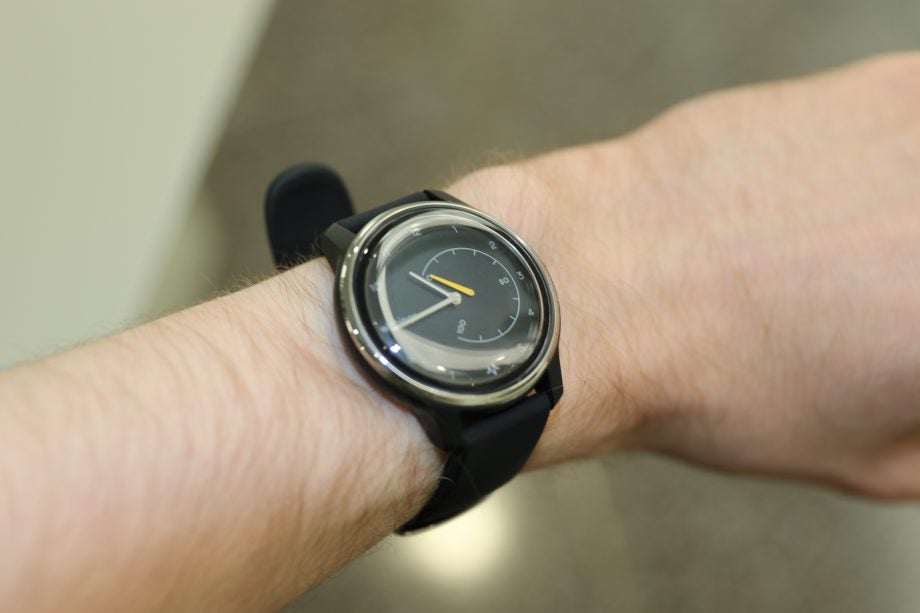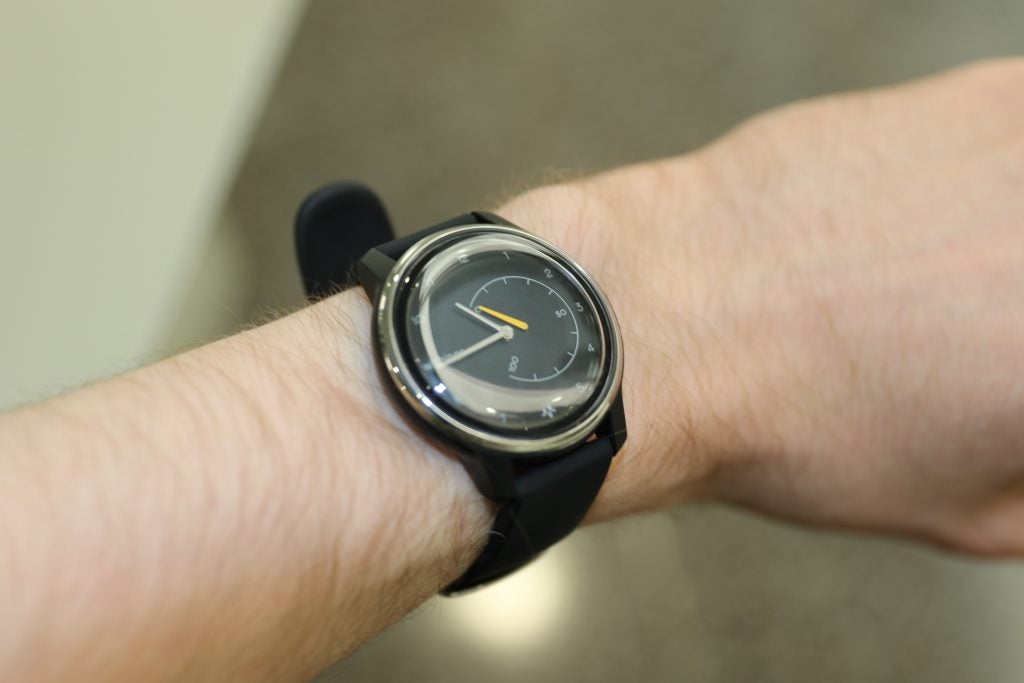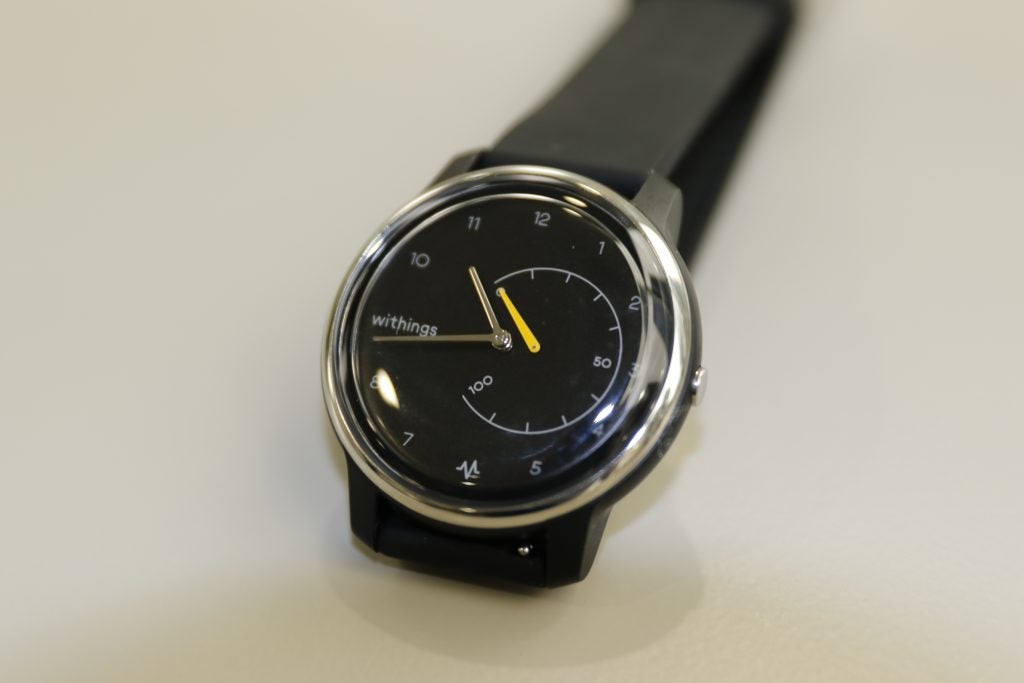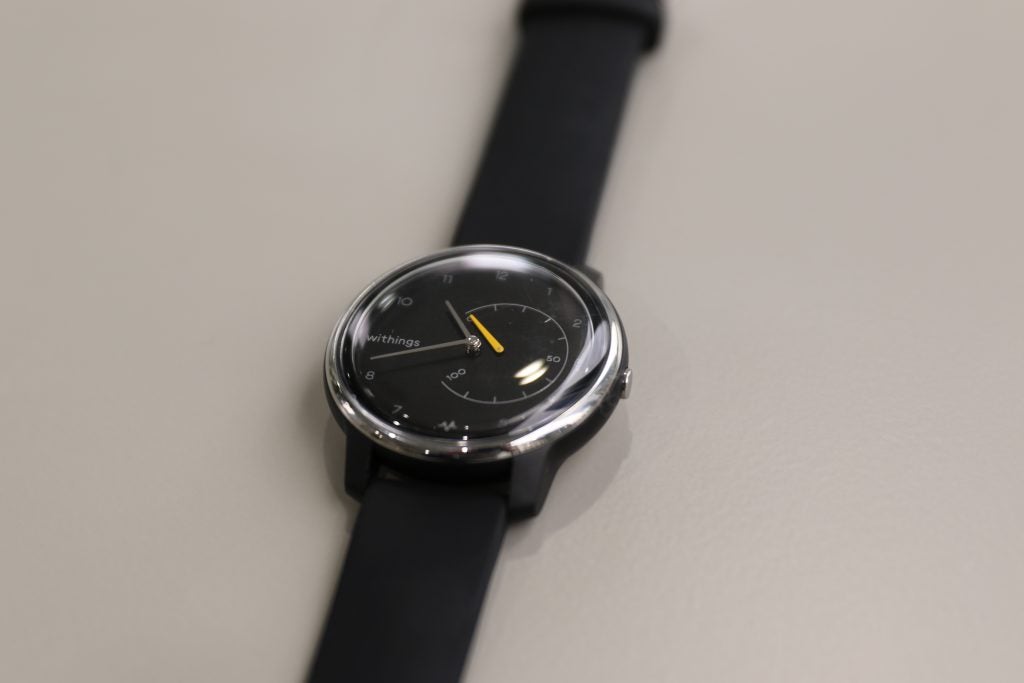Withings Move ECG Review
Withings Move ECG Review
The ECG Move sports a stylish analogue design with an ECG monitor, all for a reasonable price

Verdict
The Withings Move ECG looks swish, and it’s wonderful to have the ECG feature available at this price point. But it offers little functionality for people who take exercise more seriously than step-counting, and has none of the benefits of a digital screen.
Pros
- ECG monitor
- Stylish design
- Formidable battery life
Cons
- No all-day heart-rate tracking
- Lacks on-board GPS
- Few "smart" features
Key Specifications
- Review Price: £129.95
What is the Withings Move ECG?
The Withings Move ECG is an analogue activity tracker than can connect to your phone to provide stats on your workouts. As you can tell by the name, this watch boasts a key upgrade over the Withings Move: it’s got a medically-certified ECG for tracking the electrical impulses in your heart.
At the time of writing it costs £129.95, and while this might plant it on the pricier end of the activity tracker market generally speaking, it’s a rarity to find an ECG on any such wearables — it’s a feature reserved for higher-end smartwatches. Aside from this eye-catching new tool, we still expect a strong-performing wearable that capably tracks a variety of exercises.
Withings Move ECG design – A watch for all occasions
Just like Withings’ other offerings, this watch stands out from the rest of the crowd of fitness trackers due to its analogue design.

Rather than a superficial digital interface, this timepiece overlays a plain black face with elegant silver hands. As such, it’s a watch that you’d be happy to wear whether working out or wearing a suit; in this regard, FitBit just doesn’t cut the mustard.
During intensive exercise, the watch remains comfortable and isn’t in the least distracting. Its versatility is admirable.
A fully analogue display reliably delivers at least two key benefits in common with traditional watches – but that are sometimes missing even from premium smartwatches. The first is that battery life is enduring, plus you can always tell the time.
Demanding digital smartwatches result in super-quick battery drain, and neither do they necessarily feature an “always-on” display. This gives the Withings Move ECG an immediate practical advantage.
However, it obviously suffers from the lack of interactivity and communication for which digital fitness trackers are well known. This display is unchangeable, with the only complication on the face being a dial from 0-100 that tracks your steps as a percentage of your set target, which resets every day.
The design essentially makes tracking your exercise unobtrusive, aiming instead for a watch for all occasions that also offers some fitness utility. This sets the tone for its overall performance.
Withings Move ECG software – No access to notifications on your watch
You’ll need a smartphone to pair with this watch, and it’s compatible with devices running iOS 10 or later, and Android 6.0 onwards. Startup is straightforward, and you’ll need to set the time and your footsteps target at the first occasion you use the watch.

Of course, the analogue nature of the device means that you can’t access any notifications on your watch; the app is the be-all and end-all. Thankfully, then, the interface is clear and simple to use – especially in comparison to the cluttered control panels of some rivals, which seem determined to emulate the dashboard of a high-tech fighter jet.
However, as explained further on, much of this clarity is down to the lack of exercise-tracking features, rather than just a minimalist design philosophy.
Withings Move ECG fitness tracking – Limited, but it can track sleep and has an electrocadiogram
As indicated by the design, the Move ECG is geared mostly towards step-counting, and is therefore likely to leave fitness fanatics disappointed.
The device constantly tracks steps and the number of floors you’ve climbed. To this end, the interface provides encouraging benchmarks, such as congratulating you that you’ve climbed the height equivalent of the Eiffel Tower in a day. This is useful if the step counter is your principal means of keeping fit. For those used to more intensive exercise – or, more importantly, if you’re looking to pick up the habit – it’s a disappointment.
Unlike the majority of fitness trackers on the market right now, this device doesn’t offer all-day heart rate tracking. It can calculate your resting heart rate if you sit down and select the relevant feature on the app. However, if you’re concerned about under- or over-exerting yourself during exercise, or want to monitor your stress levels, then this watch isn’t for you.
It does offer sleep tracking, however – a feature still conspicuously lacking from the Apple Watch Series 5.
When you start exercising, you press down the crown of the device until you receive haptic vibration feedback. The hands then reposition to midnight and function as a stopwatch; the hour hand now counts minutes, and the minute hand whirrs round to track the seconds passing by.
Evidently, it isn’t ideal for athletes in multi-hour events; for the casual runner, it would be more straightforward to glance at a “dumb” digital display, which is more intuitive. On top of that, there are no stats that you can view on the go – a pace calculator, a distance tracker, or your heart rate, for example.

There’s also no on-board GPS. Instead, it links up with your phone. So in order to get the most from this wearable when you’re running, you’ll have to always carry your phone with you – and, what’s more, you’d better hope it has a good GPS tracker.
Mine doesn’t. I was bemused to see that my 8km run (according to my Garmin fitness watch and corroborated by Google Maps) registered as just 6.9km on my phone. The watch itself is by no means responsible for this miscalculation, but it demonstrates the vulnerability of its reliance on smartphones, which could be very dispiriting to new runners – and utterly useless for serious ones.
Once you’re finished exercising, you can then classify what is was via the app. There’s a huge range that you can log, from skiing to golf, plus favourites such as running and swimming. But while other smartwatches give you insights into those specific activities, this is more just to register the records for your notes. There’s little insight recorded here; a running session will just provide your pace and elevation (once again, predicated on the smartphone it’s linked to).
As well as exercise tracking, this watch offers a feature mainly reserved to very high-end devices – the clue’s in the name: an ECG, or electrocardiogram. This can flag if there are any irregularities in your heart rate, at which point you should consult your doctor. This potentially life-saving feature is invaluable, and Withings is to be applauded for this development.
This watch is good for step-tracking, but little else. Even if you’re looking to dip your toes into exercise for the first time, there are preferable alternatives to this watch. But the ECG is undoubtedly an excellent feature to be included in any smartwatch, let alone one at this price point.
Should I buy the Withings Move ECG?
The Withings Move ECG is a stylish fitness tracker at a decent price, and it works fairly well for its select target audience even if it not the best smartwatch around. If you want to discreetly keep an eye on your step count with a watch suitable for any occasion, then it’s a good purchase. And if the ECG recognises a heart complaint, then it isn’t a mere bargain but a lifesaver.
But for all those who want to keep a detailed record of their fitness progress, and push themselves for higher performance, there are better alternatives are available.


